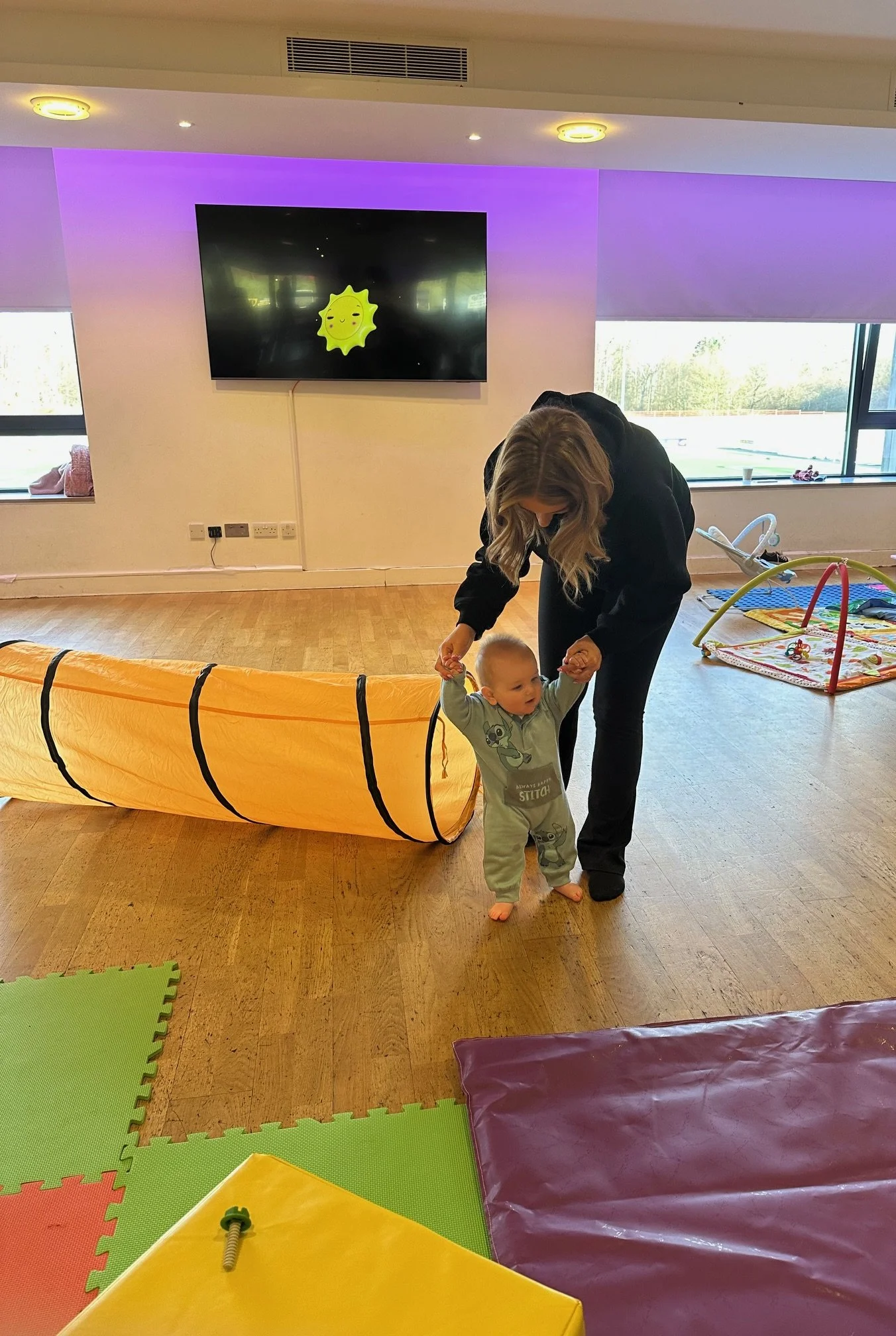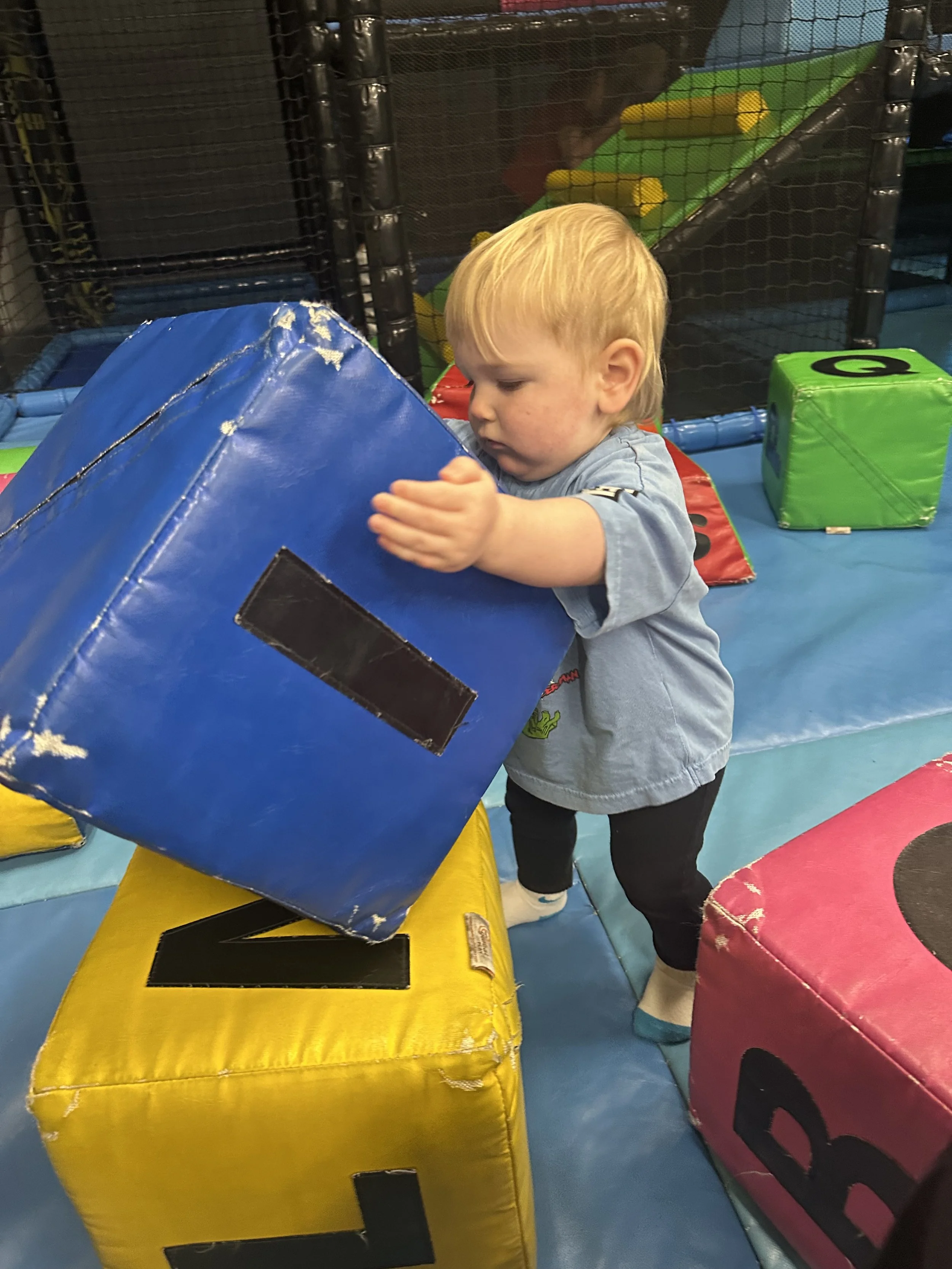THE IMPORTANCE OF LOOKING BENEATH THE BEHAVIOUR IS CRUCIAL TO UNDERSTANDING YOURSELVES AND YOUR FAMILIES.
BUSC baby & toddler group, as part of The Safe Space project
Aerial Adventure Soft Play, as part of The Safe Space Project
As a newborn baby, you have to rely on others for survival. It is not long before you learn to communicate, and move your body in a variety of ways. What often goes unnoticed is that we also have to learn what emotions look like, feel like, and how to cope with them. Society tells us that the two’s are “terrible” and three’s worse, when in fact there is so much happening to your two and three-year-old’s developing brain, all of which is out their control.
I want to help children, and young people identify their emotions, understand how these emotions manifest in their bodies, and learn how to support themselves. I am passionate about providing you with insights into their brain function to positively influence their mental health in the future.
To comprehend emotional development, we must consider how the brain processes emotions and how our sensory systems affect our behavior. By understanding what lies beneath behaviors, we gain a clearer understanding of both ourselves and our children.
BRAIN DEVELOPMENT
Every experience and interaction is incredibly important in the Early Years (0-7 years) as this is stored as a template in the brain for future experiences, connections and relationships.
Our brains are 90% developed by the time we are 5 - this is why it is incredibly important to learn the art of communication and emotion awareness in this significant period (First Things First, 2020).
Think of your brain as having 2 key area’s - the ‘emotional brain’ and the ‘thinking brain.’ When we - as adults, children or young people - experience something through our senses, it goes through our visionary or auditory system and straight to our ‘emotional brain.’ It then travels to the area of the brain responsible for thinking, making decisions and having control over our bodily functions and emotions - the ‘thinking brain’. This means the ‘emotional brain’ is more dominant and the reason behind why we respond and react with acting BEFORE thinking.
This understanding is what I teach you about. Think back to a time you have responded with a big emotion in a situation, then later thought “I wish i hadn’t said/did that,” or “I may have overreacted,” that’s because you have reacted and responded with your ‘emotional brain’ before your ‘thinking brain,’ (Goleman, 1995). The ‘emotional brain’ starts to develop around the age of 3 and the ‘thinking brain’ is still developing way into your 20’s!
ATTACHMENT STRATEGIES
The attachment strategy that is formed between the primary caregiver and a baby from birth and throughout childhood, is the most significant interaction and relationship the baby will have. It gives your baby/child an understanding of themselves, how their feelings are responded to and if their feelings are ‘safe’ or not - this lays foundations for them, for life and is all based on how you the primary caregiver, responds and reacts to your baby/child’s needs and/or emotions. If you respond positively, consistently and are sensitively attuned, your child will develop a secure attachment to you, the caregiver. Your child learns their feelings are safe because they are being responded to. They learn that adults can be trusted and that their world is predictable. Lastly, your child will be soothed by you, the caregiver in times of distress and your child will seek attachment during these emotional encounters. However, if you were/are unloving and rejecting or inconsistent, or avoidant and fearful, then your child could develop an avoidant strategy, an ambivalent strategy or a disorganised strategy.
It is important for children to socialise, however, it is vital that you their caregiver is out connecting and having relatable conversations.
Getting to know families in the community provides opportunity to share knowledge, understanding and support on their little’s behaviour.
I hope that by providing children and families with this information and support, I can reach the families who would benefit from this fresh perspective.
“1 in 6 children aged 5-16 are likely to have a mental health problem.”
“50% of all mental health problems start by the age of 14.”
“5 children in a class of 30 are likely to have a mental health problem.”
“75% of young people with mental health problems aren’t getting the help they need.”
(The Children’s Society, 2021)
To find out more about how you can support our projects, click here.





